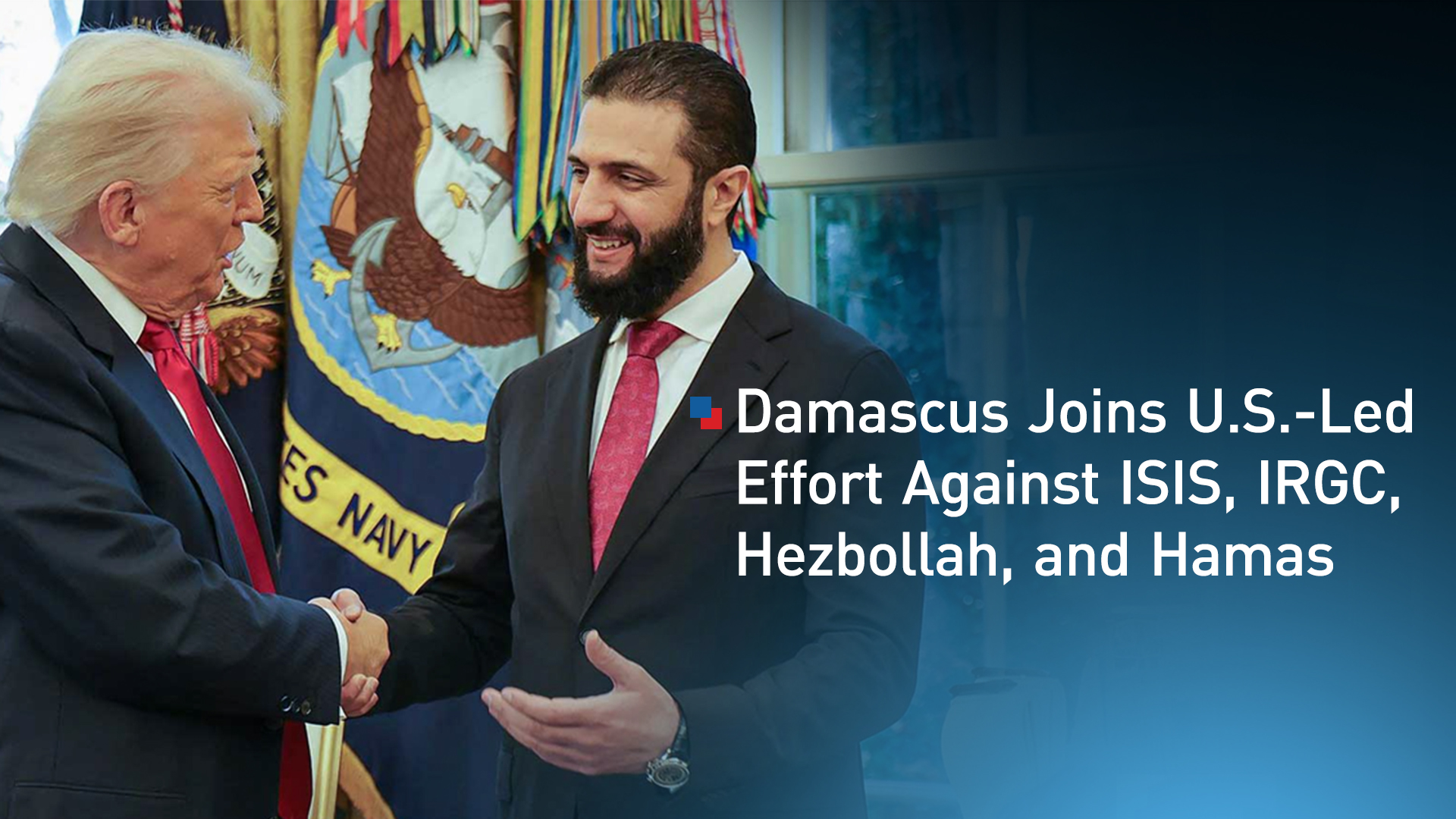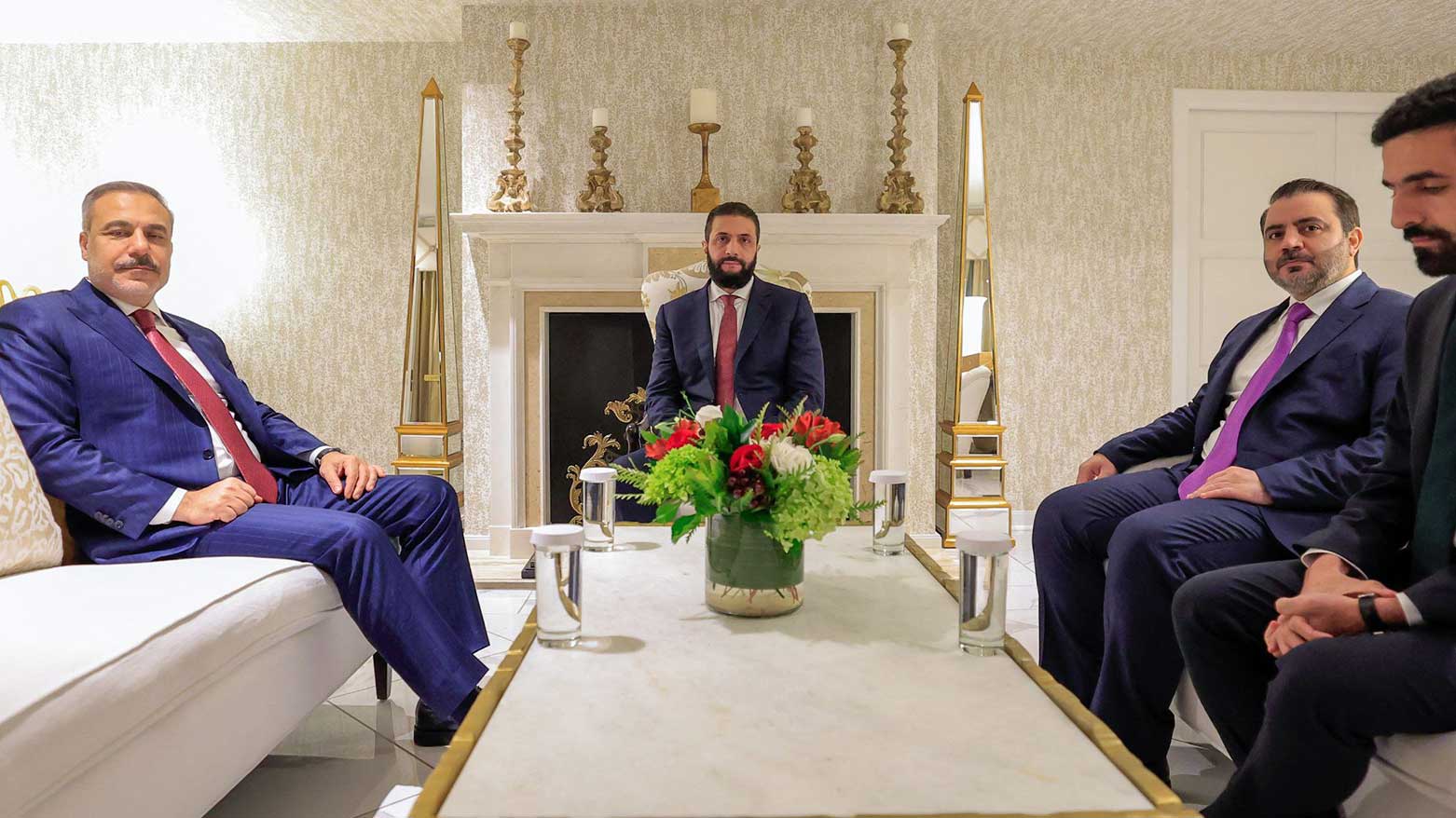Damascus Pledges to Join U.S.-Led Effort Against ISIS, IRGC, Hezbollah, and Hamas in Historic White House Breakthrough
Landmark U.S.–Syrian rapprochement ushers in plans to integrate SDF into new Syrian structures and reshape Turkish-Syrian-Israeli relations amid shifting regional alignments.

ERBIL (Kurdistan24) — In a moment described as a “decisive turning point in modern Middle Eastern history,” Syria has formally committed to joining the U.S.-led coalition against terrorism, marking the country’s first major diplomatic re-engagement with Washington in over seven decades.
The announcement followed an unprecedented White House meeting between President Donald J. Trump and Syrian President Ahmed al-Sharaa — the first visit by a Syrian head of state to the United States since Syria’s independence in 1946.
“Damascus will now actively assist us in confronting and dismantling the remnants of ISIS, the IRGC, Hamas, Hezbollah, and other terrorist networks, and will stand as a committed partner in the global effort to secure peace,” said Ambassador Thomas J. Barrack, Jr., who accompanied President al-Sharaa during the historic visit.
The meeting, attended by senior U.S. and Syrian officials, including Vice President J.D. Vance, Secretary of State Marco Rubio, and Syrian Foreign Minister Asaad al-Shaibani, symbolizes what observers describe as the “rehabilitation of Syria” from an international pariah to a potential stabilizing actor in regional security.
The move follows President Trump’s announcement on May 13 that he would lift all U.S. sanctions on Syria to “give the country a chance” after years of isolation and internal conflict.
A redefined regional framework
In a trilateral session following the bilateral summit, senior U.S., Turkish, and Syrian officials outlined a bold new regional roadmap.
“We mapped the next phase of the U.S.–Turkish–Syrian framework: integrating the Syrian Democratic Forces (SDF) into the new Syrian economic, defense, and civic structure, redefining Turkish-Syrian-Israeli relations, and advancing the alignment that underpins the Israel-Hamas ceasefire, as well as various Lebanese border issues,” said Ambassador Barrack.
This framework signals an unprecedented convergence of interests among Washington, Ankara, and Damascus — three powers that, until recently, had been on opposing sides of the Syrian conflict.
Analysts suggest that incorporating the SDF — a U.S.-backed Kurdish-led force that played a central role in defeating ISIS in Syria — into a restructured Syrian national system could both preserve U.S. influence in northeastern Syria and address Turkey’s long-standing security concerns.
For Türkiye, represented at the talks by Foreign Minister Hakan Fidan, the emerging partnership reflects a strategic pivot from confrontation to managed cooperation.
The trilateral coordination also aligns with broader diplomatic efforts involving Qatar and Saudi Arabia, which Barrack described as “a magic elixir” fueling the regional revival of Syria as a unified nation-state inclusive of its diverse tribal, religious, and ethnic communities.

A post-sanctions vision for Syria’s renewal
The Trump–al-Sharaa meeting underscored a broader U.S. strategic realignment in the Middle East: one that prioritizes regional self-determination over Western-imposed solutions.
Barrack emphasized that this transformation represents “a shift from estrangement to engagement,” positioning Syria not as a battlefield for proxy conflicts but as an active participant in counterterrorism, reconstruction, and diplomacy.
Central to this vision is the proposed repeal of the Caesar Act, the U.S. law that has imposed strict sanctions on Syrian officials and industries since 2020.
Ambassador Barrack urged Congress to take what he called “the final historic step” to enable Syria’s economic recovery, saying it would allow “the Syrian people and their regional neighbors to not only survive but to thrive.”
If realized, the policy shift could unlock international investment and reconstruction funds, stabilize regional migration flows, and create new economic corridors linking Syria with Turkey, Iraq, and the Gulf.
However, critics warn that lifting sanctions without clear guarantees of political reform could entrench authoritarian structures and weaken leverage over Damascus.
A fragile yet transformative moment
The broader implications of this rapprochement stretch far beyond Syria. By reframing the U.S.–Syrian relationship through security cooperation, Washington aims to limit Iranian influence and reconfigure regional power balances after years of turmoil.
At the same time, Turkey’s role as a diplomatic bridge — once at odds with both the Assad regime and Kurdish groups — could signal a pragmatic recalibration of Ankara’s regional strategy.
“The Middle East is a living mosaic,” Barrack reflected, “and Syria stands as a mosaic within that mosaic.” Yet while this new alignment presents unprecedented opportunities for cooperation, it also carries profound risks.
The integration of the SDF, the normalization of ties between old adversaries, and the recalibration of Israeli-Syrian relations will test the durability of this emerging order.
For now, though, the visit of President al-Sharaa to the White House marks a watershed moment — one that may redefine not only Syria’s future but the geopolitical fabric of the entire Middle East.
As Barrack concluded, “This week was one to remember — not because the past was forgotten, but because, for the first time in decades, the future feels within reach.”
